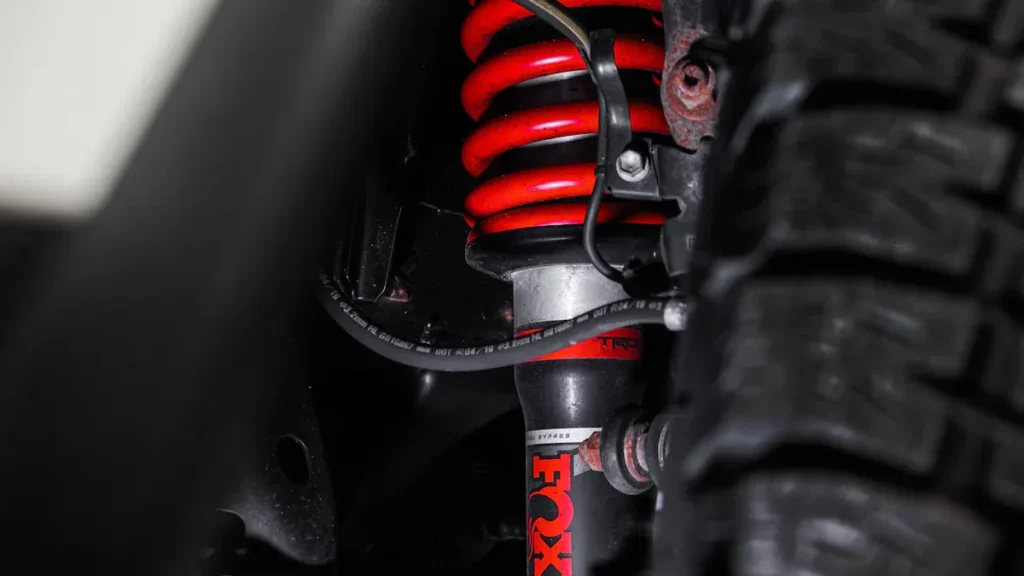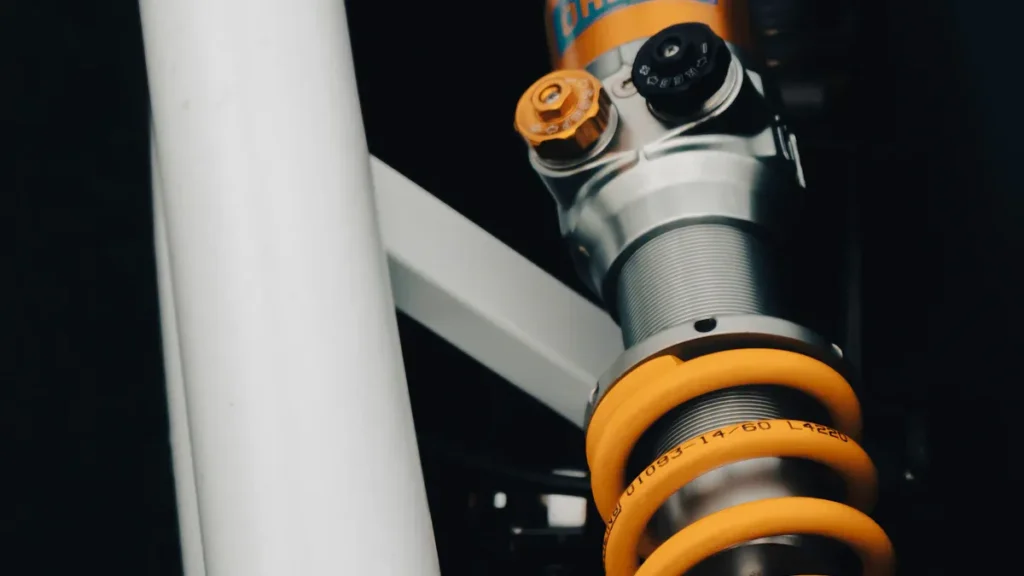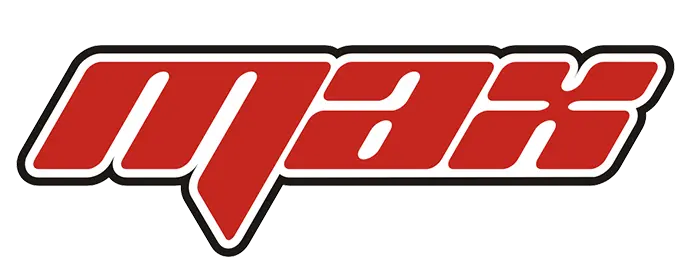Shock absorbers are sophisticated hydraulic devices that control vehicle suspension movement by converting kinetic energy into thermal energy through controlled fluid resistance. Understanding their operation principles, internal components, and damping mechanisms is essential for anyone involved in automotive maintenance, engineering, or simply curious about vehicle dynamics. This comprehensive guide explores the fundamental physics, construction details, and practical applications of shock absorber technology across different vehicle types and operating conditions.
Table of Contents
Fundamental Working Principles of Shock Absorbers

A shock absorber operates on the fundamental principle of hydraulic damping, where kinetic energy from vehicle movement is converted into thermal energy through controlled fluid resistance. This energy conversion process provides the damping force necessary to control suspension oscillations and maintain vehicle stability.
The basic physics involves Pascal’s Law and fluid dynamics principles. When the piston moves through hydraulic fluid within the shock absorber cylinder, it creates pressure differentials that force fluid through precisely calibrated orifices and valves. This controlled flow restriction generates the damping force that opposes suspension movement. For a comprehensive understanding of basic shock absorber concepts, these fundamental principles form the foundation of all damping systems.
The energy conversion equation follows: Kinetic Energy (½mv²) → Hydraulic Work (P×V) → Thermal Energy (Heat)
| Energy Form | Source | Conversion Process | End Result |
|---|---|---|---|
| Kinetic Energy | Vehicle movement | Piston displacement | Mechanical work |
| Hydraulic Energy | Fluid pressure | Controlled flow resistance | Damping force |
| Thermal Energy | Fluid friction | Heat dissipation | Energy absorption |
The damping coefficient determines how effectively the shock absorber controls movement. Higher damping coefficients provide firmer control but may compromise ride comfort, while lower coefficients offer smoother operation but less precise control. Engineers balance these characteristics based on vehicle application and performance requirements.
Modern shock absorbers incorporate velocity-dependent damping, where the damping force increases proportionally with piston velocity. This characteristic ensures gentle response to small road irregularities while providing firm control during aggressive driving or severe road conditions.
The effectiveness of hydraulic damping depends on several critical factors: fluid viscosity, temperature stability, valve design, and piston geometry. These elements work together to create predictable, consistent damping characteristics across various operating conditions.
Internal Components and Structure Analysis
Understanding shock absorber internal construction reveals the sophisticated engineering required to achieve reliable hydraulic damping. Each component serves specific functions within the overall system, contributing to performance, durability, and maintenance characteristics.
Primary Structural Components:
Outer Cylinder (Pressure Tube): The main housing contains hydraulic fluid and houses all internal components. High-quality shock absorbers use aluminum AC2B-F construction with specialized surface treatments like powder coating or painting for corrosion resistance and durability.
Piston Assembly: The heart of the damping system, featuring precisely machined ports and integrated valve systems. The piston divides the cylinder into compression and rebound chambers, controlling fluid flow between these areas during operation.
Piston Rod: Connects the piston to the vehicle suspension, transmitting forces between the wheel and chassis. Premium units feature mirror-surface treatment with hard chrome plating, achieving tensile strength and compressive strength above 800 MPa. The chrome plating process typically uses 37Mn5 steel with nickel and chrome layers for optimal durability. Understanding hard chrome plated piston rod benefits reveals why this surface treatment is critical for long-term performance.
| Component | Material Specification | Surface Treatment | Performance Characteristics |
|---|---|---|---|
| Piston Rod | 37Mn5 High-tensile steel | Nickel + Chrome plating | 800+ MPa strength, HRC 60+ hardness |
| Outer Tube | Aluminum AC2B-F | Powder coating/Painting | Corrosion resistance, thermal stability |
| Valve Body | Precision steel alloy | Heat treatment | Precise orifice control |
| Sealing System | Specialized elastomers | Chemical resistance | 2,000,000+ cycle life |
Sealing Systems: Critical for maintaining hydraulic integrity, premium shock absorbers utilize high-quality oil seals from manufacturers like NOK. These seals provide exceptional sealing performance with service life ratings exceeding 2,000,000 cycles while maintaining smooth piston rod movement.
The sealing system includes multiple elements: primary seals prevent fluid leakage, secondary backup seals provide redundancy, and dust seals protect against contamination. Rubber boots often provide additional protection, keeping dirt and debris away from critical sealing surfaces.
Hydraulic Fluid Chamber: Contains specialized shock absorber fluid engineered for consistent viscosity across temperature ranges. The fluid must resist foam formation, provide stable damping characteristics, and protect internal components from wear and corrosion.
Quality manufacturers specify particular fluid types and change intervals to maintain optimal performance. The fluid volume and reservoir design affect heat dissipation capabilities and sustained performance under demanding conditions.
Hydraulic Damping Mechanics and Fluid Dynamics

The hydraulic damping process involves complex fluid dynamics principles that create controlled resistance to piston movement. Understanding these mechanics explains how shock absorbers achieve precise damping characteristics and consistent performance.
Fluid Flow Dynamics: When the piston moves through hydraulic fluid, it creates pressure differentials between the compression and rebound chambers. Fluid must flow through calibrated orifices, creating controlled resistance that generates the damping force.
The flow rate follows the orifice flow equation: Q = Cd × A × √(2ΔP/ρ), where Q represents flow rate, Cd is the discharge coefficient, A is orifice area, ΔP is pressure differential, and ρ is fluid density.
Pressure Distribution Patterns: During compression, fluid pressure increases in the lower chamber while decreasing in the upper chamber. The pressure differential forces fluid through compression valves, creating resistance proportional to piston velocity.
During rebound (extension), the pressure relationship reverses, with fluid flowing through rebound valves. This bidirectional flow control allows engineers to tune compression and rebound damping characteristics independently.
Viscosity Effects: Hydraulic fluid viscosity directly affects damping characteristics. Higher viscosity fluids provide increased damping force but may become too thick in cold temperatures, while lower viscosity fluids offer smoother operation but reduced damping effectiveness.
Temperature compensation becomes critical in extreme operating conditions. Quality shock absorbers use multi-grade fluids that maintain relatively stable viscosity across temperature ranges, ensuring consistent performance from arctic conditions to high-temperature operation.
Cavitation Prevention: Rapid piston movement can create low-pressure zones that cause hydraulic fluid to vaporize, forming bubbles that compromise damping effectiveness. Advanced shock absorber designs incorporate gas chambers or foam cells to maintain positive pressure and prevent cavitation.
The gas pressure system also compensates for thermal expansion of hydraulic fluid, maintaining consistent internal pressure across temperature variations. This pressure maintenance ensures reliable damping characteristics and prevents seal damage from pressure fluctuations.
Compression and Rebound Cycle Operations
Shock absorber operation involves two distinct phases: compression (jounce) and rebound (bounce), each requiring different damping characteristics to achieve optimal suspension control. Understanding these cycles explains how shock absorbers maintain tire contact while providing ride comfort.
Compression Cycle Mechanics: During compression, the wheel moves upward relative to the vehicle body, compressing the shock absorber. The piston moves downward in the cylinder, reducing the volume of the lower chamber and increasing pressure.
Hydraulic fluid flows from the high-pressure lower chamber to the lower-pressure upper chamber through compression valves. The valve design determines flow restriction, creating damping force that opposes the compression movement.
Compression damping typically provides 20-30% of total damping force, designed to control initial impact absorption while allowing the suspension to respond to road irregularities. Too much compression damping creates harsh ride quality, while insufficient damping allows excessive body movement.
Rebound Cycle Mechanics: During rebound, the wheel moves downward relative to the vehicle body, extending the shock absorber. The piston moves upward, increasing lower chamber volume and creating a pressure differential that forces fluid through rebound valves.
Rebound damping provides 70-80% of total damping force, controlling the suspension’s return to normal position after compression. Proper rebound control prevents excessive bouncing and maintains tire contact with the road surface.
| Cycle Phase | Piston Movement | Fluid Flow Direction | Primary Function | Damping Percentage |
|---|---|---|---|---|
| Compression | Downward | Lower to upper chamber | Impact absorption | 20-30% |
| Rebound | Upward | Upper to lower chamber | Control return movement | 70-80% |
Asymmetrical Damping Design: Most shock absorbers feature asymmetrical damping, with different force characteristics for compression and rebound cycles. This design optimizes both ride comfort and handling performance by tailoring damping to each phase’s specific requirements.
The asymmetrical approach allows engineers to provide gentle compression damping for ride comfort while maintaining firm rebound control for handling precision. This balance becomes particularly important in performance applications where both comfort and control are essential.
Velocity-Sensitive Response: Modern shock absorbers incorporate velocity-sensitive damping that adjusts force based on piston speed. Slow movements encounter minimal resistance for comfort, while rapid movements generate increased damping force for control.
This velocity sensitivity prevents harsh responses to small road irregularities while providing firm control during aggressive driving or severe road conditions. The relationship typically follows a progressive curve where damping force increases exponentially with velocity.
Valve Systems and Damping Control
Valve systems represent the most sophisticated aspect of shock absorber design, controlling fluid flow to achieve precise damping characteristics. These systems determine how the shock absorber responds to different operating conditions and input frequencies.
Compression Valve Design: Compression valves regulate fluid flow during the compression cycle, typically featuring multiple orifices and spring-loaded discs. The valve opening pressure and flow area determine compression damping characteristics.
Base valve systems often incorporate both fixed orifices for low-speed damping and blow-off valves for high-speed operation. This dual-stage design provides smooth operation during normal driving while preventing harsh impacts during severe conditions.
Rebound Valve Configuration: Rebound valves control fluid flow during extension, usually integrated into the piston assembly. These valves typically feature more restrictive flow characteristics than compression valves, reflecting rebound damping’s greater contribution to overall control.
Stack valve systems use multiple flexible discs that progressively open as pressure increases. This design creates digressive damping characteristics where the damping force increase becomes less pronounced at higher velocities, preventing excessive harshness.
Adjustable Valve Systems: Performance shock absorbers often incorporate adjustable valving that allows real-time damping modifications. These systems may include external adjusters for compression and rebound damping, enabling fine-tuning for specific applications.
| Valve Type | Location | Function | Adjustment Range |
|---|---|---|---|
| Compression | Base valve/Piston | Controls compression damping | 10-50 clicks typical |
| Rebound | Piston assembly | Controls rebound damping | 12-60 clicks typical |
| Remote Reservoir | External chamber | High/low speed separation | Independent adjustment |
Electronic Control Systems: Advanced shock absorbers may incorporate electronic valve control systems that automatically adjust damping based on sensor inputs. These systems can modify damping characteristics in real-time based on road conditions, driving style, and vehicle dynamics.
Electromagnetic or piezoelectric actuators control valve positioning with millisecond response times, enabling precise damping control that mechanical systems cannot achieve. These systems often integrate with vehicle stability control and driver assistance systems.
Quality manufacturers like Max Auto Parts focus on precision valve manufacturing and calibration to ensure consistent performance. Our shock absorbers undergo comprehensive testing including metallography analysis and quality control procedures following TS16949 certification standards.
Different Types of Shock Absorber Designs
Various shock absorber designs have evolved to meet different performance requirements, vehicle applications, and operating conditions. Each design offers specific advantages and characteristics suited to particular use cases.
Twin-Tube Design: The most common configuration features an inner working cylinder surrounded by an outer reserve tube. Hydraulic fluid and gas are separated, with the reserve tube providing additional fluid capacity and heat dissipation. Learn more about twin-tube shock absorber technology and its specific advantages in various applications.
Twin-tube designs offer cost-effective manufacturing, reliable performance, and adequate heat dissipation for most applications. The base valve controls compression damping, while piston valves handle rebound damping, allowing independent tuning of each phase.
Monotube Design: Single-cylinder construction with a floating piston separating hydraulic fluid from high-pressure gas. This design provides superior heat dissipation, consistent performance, and mounting flexibility.
Monotube shock absorbers typically offer better fade resistance under extreme conditions due to improved heat transfer and larger fluid capacity. The direct piston control of both compression and rebound damping enables more precise tuning capabilities.
Coilover Integration: Many modern applications integrate shock absorbers with coil springs in coilover assemblies. This design provides compact packaging, precise suspension geometry control, and often includes adjustability for both damping and spring preload. To understand what coilover suspension systems offer and their practical applications, these integrated designs represent modern suspension engineering.
Max Auto Parts specializes in coilover applications for various vehicle models including CG125, GN125, AX100, JH70, GY6, and WY125. Our coilover designs feature hi-tensile performance construction with comprehensive quality control testing. For detailed information about complete shock strut structure and component integration, our engineering expertise ensures optimal performance in demanding applications.
| Design Type | Construction | Primary Advantages | Typical Applications |
|---|---|---|---|
| Twin-Tube | Dual cylinder | Cost-effective, reliable | Passenger cars, light trucks |
| Monotube | Single cylinder | Performance, heat dissipation | Performance vehicles, heavy-duty |
| Coilover | Integrated spring | Compact, adjustable | Sports cars, motorcycles |
| Air Shock | Air spring integration | Load leveling, adjustability | SUVs, trucks, luxury vehicles |
Specialized Applications: Different vehicle types require specific shock absorber characteristics. Motorcycle shock absorbers must handle more extreme operating angles and weight transfer conditions compared to automotive applications. Understanding motorcycle shock absorber specifications helps explain these unique requirements.
Our motorcycle shock absorbers feature protective rubber boots to maintain cleanliness and extend component life. The surface treatment includes specialized coatings to improve durability and performance in demanding riding conditions. For comprehensive guidance on shock absorber daily maintenance, proper care significantly extends service life and maintains optimal performance.
Performance Considerations: Shock absorber selection depends on vehicle weight, suspension geometry, performance requirements, and operating conditions. Performance applications may require adjustable damping, remote reservoirs, or specialized valve configurations.
Quality manufacturers provide detailed specifications and testing data to ensure proper application matching. Our engineering team offers technical support, production supervision, and quality tracking services to optimize shock absorber performance for specific applications.
Performance Factors and Operating Variables
Shock absorber performance depends on numerous variables that affect damping characteristics, durability, and overall effectiveness. Understanding these factors helps optimize selection, installation, and maintenance practices.
Temperature Effects: Operating temperature significantly impacts hydraulic fluid viscosity and sealing system performance. Cold temperatures increase fluid viscosity, potentially creating harsh damping, while high temperatures reduce viscosity and may cause damping fade.
Quality shock absorbers incorporate temperature compensation features such as thermal expansion chambers and multi-grade hydraulic fluids. These features maintain consistent performance across typical operating temperature ranges from -40°C to +80°C.
Load Sensitivity: Vehicle loading affects shock absorber operation by changing suspension geometry and force requirements. Overloading can exceed design limits, leading to premature wear, seal failure, or inadequate damping control.
Load-sensitive applications may require adjustable shock absorbers or air-assisted systems that maintain proper damping characteristics across varying load conditions. This becomes particularly important for commercial vehicles or recreational applications with significant load variations.
Maintenance Requirements: Proper maintenance extends shock absorber life and maintains performance characteristics. Regular inspection of seals, mounting points, and external condition helps identify potential issues before they become major problems. Learn about shock absorber lifespan and maintenance practices to maximize component durability.
Cleaning and protection of exposed components prevents corrosion and contamination that could compromise performance. For shock absorbers with rubber boots, ensuring these protective covers remain intact and properly positioned is essential. Understanding the role of shock absorbers and performance indicators helps identify when maintenance or replacement becomes necessary.
| Performance Factor | Impact on Operation | Mitigation Strategies | Maintenance Requirements |
|---|---|---|---|
| Temperature | Viscosity changes | Multi-grade fluids | Fluid condition monitoring |
| Contamination | Seal damage, wear | Protective boots, filters | Regular cleaning |
| Overloading | Premature failure | Load-appropriate selection | Weight limit compliance |
| Installation | Performance variation | Proper procedures | Mounting point inspection |
Quality Assessment Criteria: Evaluating shock absorber quality requires understanding material specifications, manufacturing processes, and testing procedures. Quality manufacturers provide comprehensive documentation including material certifications, test results, and performance data.
Max Auto Parts maintains rigorous quality control standards with testing equipment including projectors, roughness testers, micro hardness testers, universal tensile machines, metallography analyzers, thickness testers, and salt spray testers. This comprehensive testing ensures every component meets specified performance standards.
Professional Support Services: Quality manufacturers provide technical support, installation guidance, and troubleshooting assistance to ensure optimal performance. This support becomes particularly valuable for specialized applications or performance-critical installations.
Our experienced engineering team offers comprehensive support including technical consultation, custom application development, and ongoing quality tracking services. We provide not only quality products but also the expertise needed to optimize shock absorber performance for specific applications.
Contact Information for Technical Assistance:
For expert guidance on shock absorber selection, installation, or maintenance, contact our technical support team:
- Email: sales@maxautoparts.cn
- Phone: +86 15267273091
- Address: Building No.2, Jinshan Road No.788, Jiangbei District, Ningbo City, Zhejiang, China
- Website: https://www.nbmaxauto.com/
- Business Hours: Monday-Friday: 9am to 6pm (Saturday, Sunday: Closed)
Understanding how shock absorbers work provides valuable insight into their critical role in vehicle safety, comfort, and performance. From basic hydraulic damping principles to sophisticated valve systems and electronic controls, shock absorbers represent complex engineering solutions that continue to evolve with advancing technology and changing performance requirements.
Whether for automotive, motorcycle, or specialized applications, proper shock absorber selection, installation, and maintenance ensure optimal performance and safety. Quality manufacturers like Max Auto Parts combine advanced materials, precision manufacturing, and comprehensive testing to deliver reliable solutions that meet demanding performance standards across various operating conditions.
